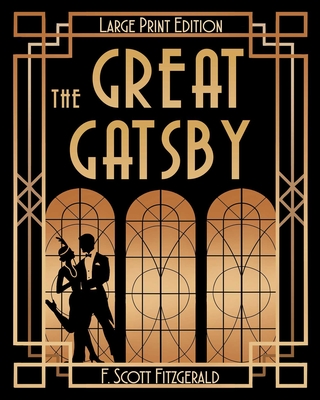Behind the ‘Great’ in “The Great Gatsby.” PHOTO CREDIT: skylightbooks.com
Despite only writing four novels before his death and considering himself to be a failure for the years leading up to his passing, F. Scott Fitzgerald still managed to be one of the most important and influential authors who ever lived.
This title and recognition comes almost exclusively from his 1925 novel, “The Great Gatsby.” Though that title was not given to him for many years after the initially lukewarm reception to what he considered to be his magnum opus. However, despite the passive response people in the 1920s gave it, perceptions have changed very drastically since and for good reason. “The Great Gatsby” is considered a quintessential Great American Novel that everyone should read. And I agree wholeheartedly.
The story of “The Great Gatsby” is an interesting one. For most of the book, the reader is moreso wandering around with Nick, our first-person narrator, as he observes those around him and attends the parties thrown by his mysterious neighbor Gatsby.
For a while, the pace of the novel feels very aimless. Instead of rigid and unmovable plot points that keep the story forward, it is sometimes difficult to track what the story is. Most of the time the reader is simply hanging out with our characters and then following Nick as he goes home to sleep. But when it comes to a piece of work like this, a piece of literary history, it is safe to assume that nothing is done by accident, including the book’s plotting.
The aimless and wandering nature of the story works as a way to build up the mystery of who Gatsby is and to build the rest of our characters in a natural way. Additionally, the brief 200 pages helps keep things from getting too boring and keeps the pace of the story moving at a quick and breezy speed. The writing itself is also less old fashioned than one may think, which makes the reading experience itself all the more rewarding and easy.
What I find to be the most interesting aspect to “The Great Gatsby” is what F. Scott Fitzgerald had been so upset about when the book was released in 1925. He expressed his disappointment in the fact that, regardless of how positive and enthusiastic reviews were of his story, no one had the slightest idea of what the book was about.
John Grisham states in his introduction to “The Great Gatsby”, “Though debates have been and will continue to be fierce, it is well accepted among scholars and serious readers that the book is highly symbolic reflection of America in the 1920’s.”
But it is only when the novel is over and the story has been put down that the reader starts to understand what “The Great Gatsby” is actually about.
“The Great Gatsby” is not about living the American dream and throwing parties in your mansion every night because you can. Instead, “The Great Gatsby” talks about the hollow nature of that very ideal. There is no American dream, precisely because of the greed and success people were being consumed by.
Gatsby functions as the perfect example of that. He made his money by turning to crime and tried to escape that past, but it could not be done. He could throw all the parties he wanted and be as nice and generous as his fortune could allow but at the end of the day, he could not live his American dream. Furthermore, he ends up being completely forgotten and abandoned by almost everyone he knows.
It is a very introspective ending that leaves the reader with something to think about, possibly something they will never be able to stop thinking about. And it is that unapologetically honest message that makes “The Great Gatsby” a work that will endure much longer than F. Scott Fitzgerald had ever expected.
Ironically, Fitzgerald’s dream, to be a serious writer with a large following and critical acclaim, eventually came to be true. But only after his death.
Fitzgerald, just like the fictional character he was writing, could not live out his American dream either.
Yet, in spite of the less than optimistic message, “The Great Gatsby” still manages to be one of the most read and beloved stories ever written. It spoke to some people in the 1920s when it was first published and it spoke to more in the 1940s when soldiers in World War Two were given copies to read. It seems to speak to more and more people with each passing decade and I’m sure that will continue in the future.
That’s a dream that I know will come true.




